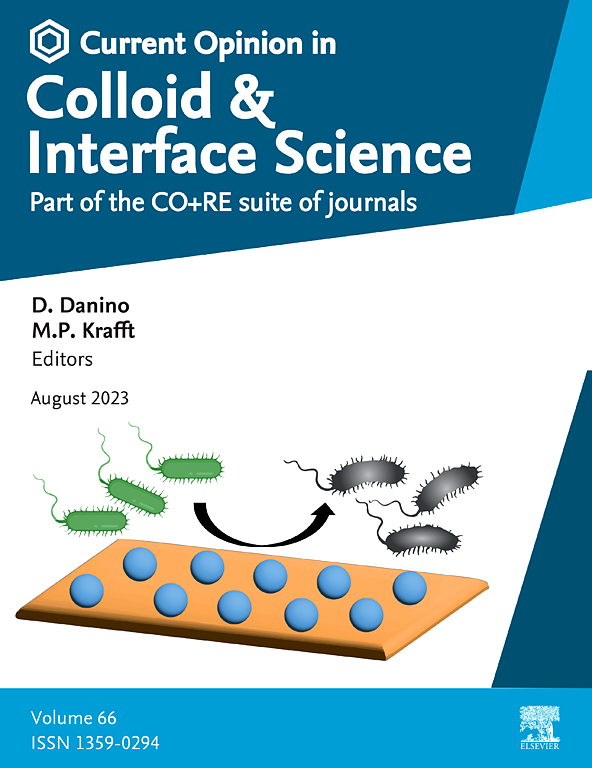Aqueous two-phase emulsion systems in 3D cell culture
IF 7
2区 化学
Q1 CHEMISTRY, PHYSICAL
Current Opinion in Colloid & Interface Science
Pub Date : 2025-06-06
DOI:10.1016/j.cocis.2025.101933
引用次数: 0
Abstract
The development of realistic 3D cell culture models by using emulsions and capillary suspensions based on aqueous two-phase systems (ATPS) has advanced the areas of cell physiology and biology. It has shown the potential to enhance the fields of cancer research, biotechnology, rapid testing of drug efficiency and toxicity, tissue engineering, as well as regenerative medicine. It has been increasingly accepted that 3D cells culture more closely reflects normal cellular function due to the enhanced cell interactions, which mimic the in vitro microenvironment and architecture of natural organs and tissues. In this review, we discuss the ATPS-aided methods to form 3D cell spheroids and cell networks by using colloids as templates for the purposes of cell structuring and will discuss the limitations and the advantages of these approaches. The use of ATPS-based cell spheroids has helped to advance basic cell sciences, including understanding cancer cell interactions with their environment in solid tumors, creating better drug models and studying cancer metastasis. Such multi-cellular assemblies have also been applied for engineering tissue constructs which have great potential for studying cell interactions in biological systems under a more realistic in vitro environment compared to 2D cell culture.

三维细胞培养中的水相两相乳液体系
基于水两相体系(ATPS)的乳液和毛细悬浮液建立逼真的三维细胞培养模型,推动了细胞生理学和生物学领域的发展。它已经显示出在癌症研究、生物技术、药物效率和毒性的快速测试、组织工程以及再生医学等领域的潜力。由于细胞相互作用增强,3D细胞培养更能反映正常细胞功能,从而模拟体外微环境和自然器官和组织的结构,这一观点已被越来越多的人接受。在这篇综述中,我们讨论了atp辅助方法,以胶体为模板,形成三维细胞球体和细胞网络,以达到细胞结构的目的,并将讨论这些方法的局限性和优势。使用基于atp的细胞球体有助于推进基础细胞科学,包括了解实体肿瘤中癌细胞与环境的相互作用,创建更好的药物模型和研究癌症转移。这种多细胞组件也被应用于工程组织构建,与二维细胞培养相比,在更现实的体外环境下研究生物系统中细胞相互作用具有很大的潜力。
本文章由计算机程序翻译,如有差异,请以英文原文为准。
求助全文
约1分钟内获得全文
求助全文
来源期刊
CiteScore
16.50
自引率
1.10%
发文量
74
审稿时长
11.3 weeks
期刊介绍:
Current Opinion in Colloid and Interface Science (COCIS) is an international journal that focuses on the molecular and nanoscopic aspects of colloidal systems and interfaces in various scientific and technological fields. These include materials science, biologically-relevant systems, energy and environmental technologies, and industrial applications.
Unlike primary journals, COCIS primarily serves as a guide for researchers, helping them navigate through the vast landscape of recently published literature. It critically analyzes the state of the art, identifies bottlenecks and unsolved issues, and proposes future developments.
Moreover, COCIS emphasizes certain areas and papers that are considered particularly interesting and significant by the Editors and Section Editors. Its goal is to provide valuable insights and updates to the research community in these specialized areas.

 求助内容:
求助内容: 应助结果提醒方式:
应助结果提醒方式:


